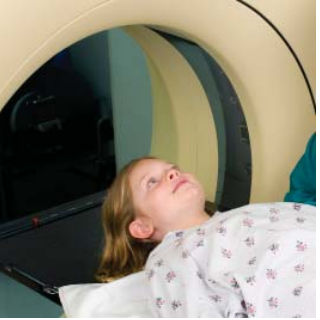
September 26, 2013 — When used to treat pediatric patients with intracranial malignant tumors, proton therapy may limit the toxicity of radiation therapy while preserving tumor control, according to research presented today at the American Society for Radiation Oncology’s (ASTRO’s) 55th Annual Meeting.
Typically, central nervous system malignancies are treated with surgical resection and post-operative radiation therapy. Proton therapy, an external beam radiation therapy in which protons deliver precise radiation doses to a tumor, offers significant sparing of healthy tissues outside the target region, compared to conventional photon radiotherapy. Proton therapy is frequently used to treat central nervous system malignancies in young children in order to minimize the amount of radiation exposure to their still-developing brain. Although this therapy holds great promise, to date, published clinical data are limited.
This study evaluated the largest reported group of pediatric patients treated with proton therapy ? 70 patients with localized ependymoma, a relatively common childhood tumor. The patients in the study ranged from 1- to 20-years-old and were all treated with involved-field proton radiation at the Massachusetts General Hospital in Boston from October 2000 to February 2011. Forty-six of the patients (66 percent) had a gross total resection, meaning that the tumor was completely removed; and 24 patients (34 percent) had a subtotal resection, meaning that only a portion of the tumor was removed.
Upon patient follow-up at 46 months after proton therapy treatment, the three-year local control was 83 percent; progression free survival (PFS) was 76 percent; and overall survival (OS) was 95 percent. The researchers found that subtotal resection surgery correlated with decreased PFS (54 percent) and OS (90 percent), compared to the patients who underwent complete tumor removal prior to proton therapy, who had a PFS of 88 percent and an OS of 97 percent.
In addition to survival outcomes, cognitive and endocrine outcomes were analyzed. Neuropsychological assessments were administered before and after proton therapy to measure total intelligence quotient (IQ). Scales of Independent Behavior (SIB-R), a written questionnaire that assessed functional independence, were completed by the patients’ parents. Within a subset of 14 of the patients, the average IQ was 108.5 at baseline, and 111.3 after two years of follow-up. In a larger group of 28 of the patients, overall SIB-R score was 100.1 at baseline, and 100.8 after two years of follow-up. It was also noted that few patients developed evidence of growth hormone deficiency (GHD), hypothyroidism or hearing loss.
“This study represents the best available evidence on the use of proton radiotherapy in the pediatric population,” said Shannon MacDonald, the principal investigator of the study, a pediatric radiation oncologist at the Massachusetts General Hospital. “Our analysis is the first to present auditory, endocrine and cognitive outcomes, the domains expected to benefit from this highly streamlined form of radiation therapy. Given the increasing numbers of proton facilities and the high cost of proton treatment, this data was urgently needed to provide evidence-based guidance on proton therapy outcomes for pediatric brain tumor patients.”
The abstract is “Proton Radiation Therapy for Pediatric Central Nervous System Ependymoma: Clinical Outcomes for 70 patients.”
For more information: www.astro.org


 December 11, 2025
December 11, 2025 









